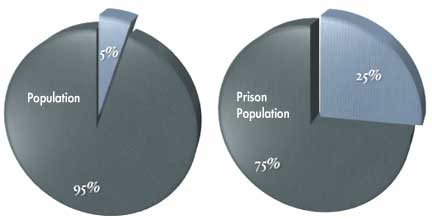I didn’t watch this round of debates – Democratic candidates dealing with minority issues: U.S. Senator Joe Biden, U.S. Senator Hillary Clinton, U.S. Senator Christopher Dodd, former U.S. Senator John Edwards, former U.S. Senator Mike Gravel, U.S. Congressman Dennis Kucinich, U.S. Senator Barack Obama and New Mexico Governor Bill Richardson.
But from the brief recaps I’ve seen around the web, the drug war got some play, with Gravel and Kucinich, of course, but also with Biden, Dodd, Richardson, and Clinton at least, giving some mention to things such as eliminating mandatory minimums and crack/powder disparities, and making needle exchange available to reduce HIV.
This is a refreshing change from the notion of appealing to African-Americans by offering increased enforcement in their communities.
- DrugWarRant.com, the longest running single-issue blog devoted to drug policy
Join us on Pete's couch.
 Send comments, tips,
Send comments, tips,
and suggestions to: Recent Comments
Shane from Slidell on Marijuana and the American drug rehab industry: “Looks like Glenn Greenwald is also starting to turn on Trump: https://rumble.com/v6wxwmq-stephen-millers-blatant-lies-debunked.html I don’t know who lies more, him, RFK…” Aug 2, 10:17
Servetus on Tech versus tech in marijuana drug enforcement: “Regular opioid use may increase dementia risk: 21-Jul-2025… regular opioid use is associated with an increased risk of dementia, particularly…” Jul 22, 22:19
Servetus on Tech versus tech in marijuana drug enforcement: “Psilocin delays cellular aging in human and mouse cells: July 22, 2025 — A surprising discovery from Emory University shows…” Jul 22, 21:47
Servetus on Tech versus tech in marijuana drug enforcement: “Nicotine addiction’s high relapse rate is associated with a neural pathway in the brain: 14-Jul-2025–Because unpleasant withdrawal symptoms fuel nicotine…” Jul 14, 23:06
Servetus on Tech versus tech in marijuana drug enforcement: “William J. McNichol, J.D., an adjunct professor at Rutgers University Camden School of Law says tests to detect marijuana consumption…” Jul 1, 21:32
Servetus on Tech versus tech in marijuana drug enforcement: “Hemp biomass passes a Δ9-THC analysis in its use as a dairy cattle feed: 30-Jun-2025–A new study [Oregon State University]…” Jul 1, 00:00
Tammara Mondalmi on Petition for Correction under the ONDCP Information Quality Guidelines: “Hello! Get your marijuana website, product, or service, listed on maps.ganja.com for FREE through the end of June. It’s going…” Jun 23, 10:43
JesseAcaks on Tech versus tech in marijuana drug enforcement: “Tried the https://www.cornbreadhemp.com/products/thc-seltzer-blueberry-breeze-5mg from Cornbread Hemp. I went with the thoroughly spectrum ones — the ones with a little THC.…” Jun 17, 12:30
Pages
- About
- Articles
- A Day at the Museum
- A story for Thanksgiving (Isidro and Teresa Aviles)
- Andrea Barthwell, caught red-handed
- Andrea Barthwell, Snake Oil Salesman
- Bong Hits 4 Jesus – Supreme Court Case
- DEA Bad Girl Michele Leonhart
- Deep Thoughts About the Drug War
- Drug War Victims
- Drug War Videos
- Drug WarRant Joins SOPA, PIPA Protest
- Hammer Down, Pop Up
- If I were Contrarian-King of the United States
- Increase in Burger Abuse Seen
- Irvin Rosenfeld and the Compassionate IND — Medical Marijuana Proof and Government Lies
- Karen Tandy and the DEA (Can Congress Get a Clue?)
- Len Bias – the death that ushered in two decades of destruction
- Mother and Son
- Patriot Act, Victory Act, Despot Act
- Petition for Correction under the ONDCP Information Quality Guidelines
- Raich v. Ashcroft
- Rand and American Enterprise Institute Studies – Indictments of Federal Drug Policy
- the Drug Czar is Required by Law to Lie
- Treatment Statistics
- Who’s Who in Drug Prohibition
- Why is Marijuana Illegal?
August 2025 M T W T F S S 1 2 3 4 5 6 7 8 9 10 11 12 13 14 15 16 17 18 19 20 21 22 23 24 25 26 27 28 29 30 31 Archives
Authors
August 2025 M T W T F S S 1 2 3 4 5 6 7 8 9 10 11 12 13 14 15 16 17 18 19 20 21 22 23 24 25 26 27 28 29 30 31




